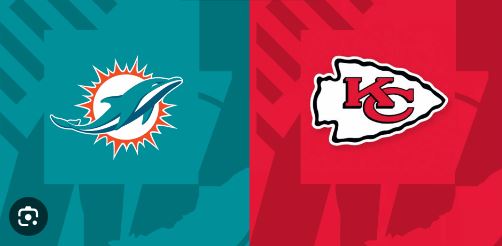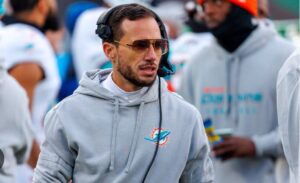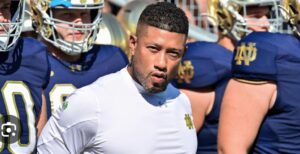
The Dolphins had better wrap up warm.
With less than four minutes remaining in regulation in Week 14 of the 2023 NFL regular season, the Miami Dolphins led the Tennessee Titans 27-13. If the Dolphins had won that game, they would have advanced to 10-3 on the season, taking a three-game lead in the AFC East over the Buffalo Bills. Even if the remainder of the season had gone as planned, that win would have been enough for the Dolphins to secure the division, rendering Miami’s defeat to the Bills in the season finale inconsequential.
It would also have provided the Dolphins with a home playoff game.
Instead, Miami lost a 14-point lead with less than three minutes remaining, becoming the first team to do so since 2017. Previous 582 teams in that circumstance had all won. The Dolphins were the first club to lose during that time.
Now they must travel to Arrowhead Stadium, and if that isn’t awful enough, the Dolphins are on the cusp of making more NFL history.
Of the weather variety.
Forecasters predict bitterly cold temperatures in Kansas City on Saturday. Forecasts are for a high of 12 degrees throughout the day on Saturday, but with the game starting shortly after 7:00 p.m. local time — and well after dark — temperatures will be in the single digits by the time it begins.
Forecasters predict a low of -3 degrees on Saturday night. With the predicted wind chill, it will seem even colder at Arrowhead this weekend.
This game is on track to be one of the coldest in NFL playoff history. The “Ice Bowl,” the 1967 NFL Championship Game between the Green Bay Packers and the Dallas Cowboys, remains the coldest NFL game. Temperatures were -13 degrees, with a wind chill of -48 degrees.
What will be the next coldest game in NFL postseason history? During the 1981-1982 season, the AFC Championship game between the San Diego Chargers and the Cincinnati Bengals became known as the “Freezer Bowl.” That afternoon, the temperature in Cincinnati reached -9 degrees, with a wind chill of -59. These conditions aided in cooling down the Chargers’ attack, which was the best in the league at the time.
Then there came the 2015-2016 NFC Wild Card game between the Minnesota Vikings and the Seattle Seahawks. The Vikings played their home games at TCF Bank Stadium that season since US Bank Stadium was still under construction. For that game, the temperature dropped to -6 degrees Fahrenheit, with a wind chill of -25.

The fourth coldest NFL playoff game in history was also played at Lambeau Field, during the 2007-2008 season, between the Packers and the New York Giants. With a wind chill of -24 degrees and an air temperature of -4, Tom Coughlin’s cheeks turned bright red.
The fifth-coldest game in NFL playoff history, which is on track to be surpassed by the Chiefs-Dolphins game, occurred in 1994, during a Divisional Round game between the Los Angeles Raiders and the Buffalo Bills. The temperature was measured as 0 degrees, with a wind chill of -32. Buffalo won that game and advanced to Super Bowl XXVIII, where they were defeated by the Cowboys.
If forecasts hold true and Saturday night’s game falls into the negatives, it will join these contests as one of the coldest in NFL history.
Here’s why that’s even worse for the Dolphins. The Dolphins have lost their last ten games when the temperature is below 40 degrees, according to Stathead. That includes a loss to the Bills in the Wild Card round last year, when the temperature in Buffalo was 27 degrees.
The last time Miami won a game in temperatures below 40 degrees Fahrenheit was on Christmas Eve of 2016, when they defeated the Buffalo Bills 38-35 in overtime. Tua Tagovailoa was a high school senior. Mike McDaniel worked as an offensive assistant for the Atlanta Falcons under Dan Quinn. The temperature in Buffalo that day was 38 degrees.
Which may make the Dolphins’ opponent on Saturday night feel warm.







